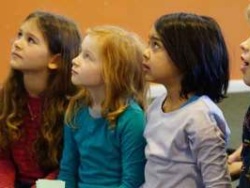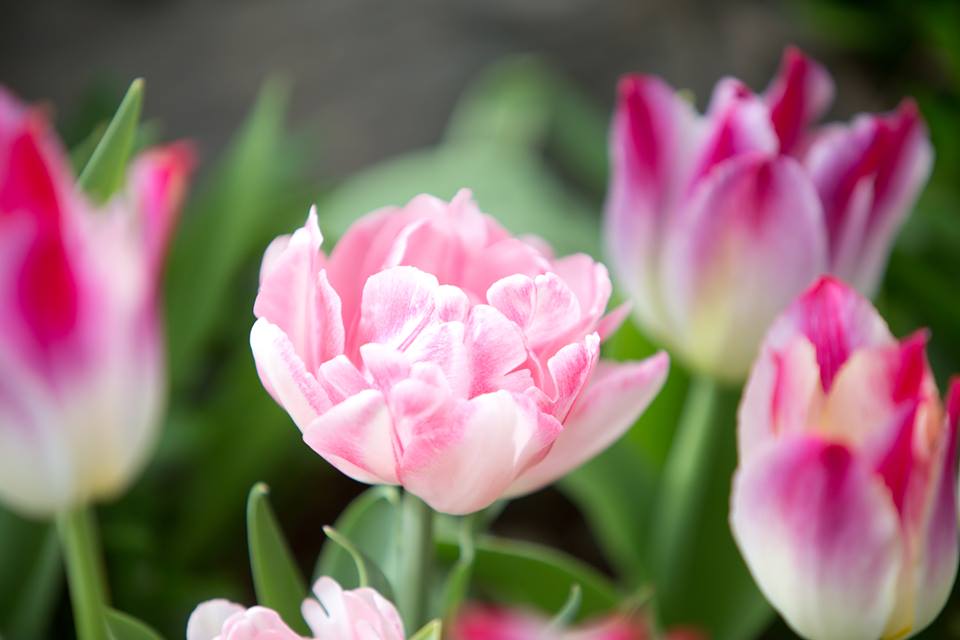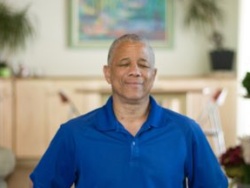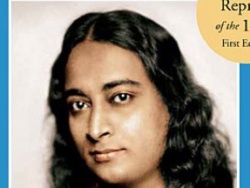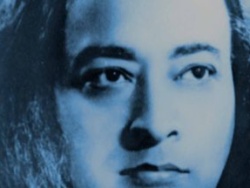Starting the Ananda School was an organic process. From the very beginning I’ve had a strong karmic connection with the kids here. I had first visited Ananda in 1970 after graduating from UC Berkeley. After spending a summer at the community, I decided to go back to school to get my master’s degree in education. Two years later I returned to Ananda and began teaching. I desperately wanted to approach the school differently, because everything I had studied in education emphasized that things were presented as being external to the person; getting educated meant learning facts about some topic that you might or might not be interested in. Besides all the discipline required in public classrooms to keep kids from hurting each other, there was no time to get to know them and find out what they needed to do for their lives to become more integrated and more dynamic.
During my years in the study of education I found that the Montessori and Waldorf schools exhibited the most promising approaches. When I asked Kriyananda about going off to study these systems, he said, “No, don’t do that. Your answers need to come from within.” So in addition to meditating, I flipped back through all the old SRF magazines looking for education ideas Yogananda had written about. I came up with two articles: one was called “The Balanced Life,” and the other was called, “The Psychological Chart.” Essentially, Yogananda had outlined his ideas of education in those two articles. So through Yogananda’s guidance and by working with the kids, I began to focus on the core philosophy for our school.
It was never Swami Kriyananda’s style to guide me through the experience of creating an Ananda school; he wanted me to figure it out for myself. He was modeling for me the style of teaching I needed to learn. When Kriyananda wrote his book Education for Life, he did it all from intuition.
Education for Life (EFL) isn’t supposed to be teacher-led in the sense of now we do this, and now we do that. The idea was to get the students to the point where they feel like they have some of the reins in their own hands in regards to their education. He showed me the way to do this with the schools, and later on with the monastery.
A major problem in most schools is motivating the children to learn. Yet if you approach education with the EFL method, the child provides the motivation. They are eager to learn if it’s the right time and the right subject matter for them—which means that children go at their own pace, in their own style. This holistic approach is more exciting because the student feels involved; she feels that it is she herself that she is exploring. There is a joy to learning.
So the job of the teacher is to get to know the child, and find out what the child is ready to learn. You can then help him become connected with the materials he needs. If this is done correctly, the child will not resist what he’s being taught. In the process, the child will become well-educated; he will cover most of the usual academics, but in a much more organic way.
Yogananda challenges you to step back from your own ego, your own list of priorities, and to try to stay centered in your soul and become aware of what is actually happening in front of you, rather than what you’re projecting onto what is happening in front of you. In her book The Flawless Mirror, Kamala Silva describes her guru, Yogananda, as a perfect mirror—flawless in that he reflected back to her exactly what she was going through. You don’t have to be a perfect mirror to be a good teacher, but the more flawless you are, the better the teacher you are going to be. The whole idea is to stand in front of the child and let the child show who they are. As a teacher, you’re there to read him or her.
Yogananda said there are physical, mental, social and spiritual aspects to a child, and the teacher tries to become aware of all four of them. Then, in “The Balanced Life,” he says the idea is to balance those four qualities for optimum growth. Every child learns in a unique way. That’s what makes teaching at Ananda so exciting, because you’re constantly being enthralled by this kaleidoscope of life. Whereas with traditional education you’re constantly bored because you have to teach the same things to kids over and over again; and the kids don’t want to learn it.
It took me two years of teaching at Ananda before I felt this new system was a completely constructive experience for the kids. There were so many things that I needed to learn. Being a trained educator, I had all this programming to unlearn. Yet from the very beginning we incorporated an altruistic element into education—the idea of having children reach up in their consciousness for higher things. One of the best classes I’ve ever had was a fourth and fifth grade class. They were excited about the Hindu classics, the Mahabharata and the Ramayana. We spent a whole year working on those two epics, which give a picture of life from a higher octave, in storybook form. Ideals of right living like selflessness, integrity, truthfulness, and courage all come into play. By sharing stories or plays or having discussions or ceremonies, the teacher opens a window for the kids and lets them see this higher dimension of life.
EFL encourages teachers to keep a steady flow of uplifting things happening in the classroom. This doesn’t mean that everything has to be inspirational, but I try to eliminate things that have a downward pull. An awful lot of television programs undermine positive values by accentuating the gross, the crass and the negative. Kids see these negative values expressed in the cartoons and other TV programs, the videos, music, and the newspapers as well. Some kids are going to find negative stuff on their own; they just have that kind of magnetism. And that’s OK; everybody has their karma to work out. But I think one job of the teacher is to weed out negative material from the classroom.
At the same time, there is also a huge space in education for things just to be fun. The right kind of fun is uplifting, in a wholesome way. Jokes and funny little stories are things I look for, where the main benefit is humor.
When we began in 1972, there was no money for the schools. I went to Seva, who was in charge of finances and she said, “ The community is going to give you a budget, and out of the budget you’ve got to provide your salary and supplies and buildings, everything.” I said, “OK, how much is that?” And she said, “$50 a month”! Obviously, we didn’t have a lot of funds for creating our school, so a lot of the parents pitched in to build the original building, which is now the Aspen building.
You just have to live here to see how much grace there is at Ananda. One story that stands out is from my junior high school class in the late seventies. We had no recreational facilities, just a building for the classroom and that was it. It was February and we were having an extremely wet winter; the kids were jumping off the walls with all their pent-up energy. We couldn’t go outside, but I did know it was snowing further up in the Sierras. I came in one day thinking we have to do something, we’re going to kill each other if we stay in the classroom any longer.
The kids were all asking, “What will we do, what will we do?” And I said, “Let’s go snow camping.” I can’t remember how I even got the idea. They asked, “What’s snow camping?” And I said, “I don’t really know. But I know that there’s snow, and I know that people camp in the snow somehow. We’ll find out.” Well, earlier that afternoon there had been a knock at the door of the classroom, and a lady came in and asked if she could observe the class. So she was sitting there observing the discussion about snow camping, and when I told the kids that I didn’t know how we’d learn about it, the lady raised her hand and asked if she could say something. She said, “As far as snow camping goes, I’m probably the nearest to a professional snow camper that you’ll ever find. I take people on trips and I teach them how to snow camp.” And I said, “Come right up here!”
She gave us a complete explanation of snow camping, including how to dig the cave so that you can keep the heat in. Then she left and we never saw her again. We went up and had a beautiful experience. We didn’t freeze to death, and the kids got the exercise they needed. Over and over again things like that would happen. A book would appear on my desk, and though I could never find out where it came from, it would be just the book I needed for the next lesson with the kids. That must have happened twenty or thirty times. Materials would appear, people would appear, opportunities for the kids would appear.
I remember the first time we did a puppet show, I was trying to make it a big deal, but here we were, way out in the country, with nobody around. I wanted the kids to have an audience to show their work. Well lo and behold, the day we were ready to do our dress rehearsal, a TV crew pulled up from Canada! They had come down to do a documentary, and Ananda was part of it. They happened to arrive while we were doing the puppet show, and so the kids had this experience of having TV lights and everything. These kinds of experiences have happened at our school over and over again.
I’ve always felt that there is a flow of grace happening at Ananda, that there was something that God wanted to have happen in the school. And if I could get in touch with that in whatever way I was capable of, then I could facilitate the process. I encourage the teachers to have lesson plans, but I also encourage them to be able to drop them if they feel that the flow is going in a different direction. When you’re in that “flow” then the right things come at the right time, and the kids get the experiences that they’re supposed to have.
I’ve tried to describe flow learning in different ways. Sometimes it’s like the feeling of being on a raft, floating on a river. As long as the raft stays in the middle of the river, then you’re carried along with the current. It doesn’t mean that things are effortless; you might have to paddle and do different things, but there’s an energy that you become a part of. If the raft goes too far to one side or another, then you get into rocks or eddies and things that slow you down. In my experience of teaching, I’ve had the most problems when I was too tense, too fixated on some particular thing that I thought should happen, or I wasn’t willing to see that something else was trying to happen here. In developing the school, part of my training over the years was to learn to just listen more and more. Through real listening, you find that when you follow and stay in the flow, good things happen. And when you fight it, they don’t.
I’ve always emphasized that, for teachers, the most important thing is to find time to connect with each child on a regular basis, so that they know right where that child is and are able to come up with a plan for his or her growth. From there on each teacher is going to have his or her own particular style—which is one of the real strengths of the school. Two of our best EFL teachers have completely different styles of teaching.
My own life goal is to try to develop something that’s not available in our society right now. I want to train children who are ready to become kshatriyas, a Sanskrit term which stands for people who give selfless service to the broader society. That’s basically what we’re doing in the Ananda high school right now; this high school is about service, adventure and self-discovery. The high school this year has been fantastic. You can’t coerce teenagers into joining a school like this—they have to self-select to be part of it. When you get a group of kids together who have chosen to be part of something that aspires to higher values, you have an incredible time.
A highlight of one of our high school years was a play about Mother Teresa of Calcutta that the students wrote and produced together. Telling the story through the eyes of a girl, the play embodies the essence of giving your life in service to others, and giving it to God in the way Mother Teresa did. We performed the play around town to different groups, mostly young people but to some elderly people as well, and it really touched people; you could tell they were getting a message from it.
I’ve always thought that the teen years could be the greatest decade for personal growth in one’s life. Now I’m starting to see that it’s true. Between the ages of 13 and 18, students are able to introspect and identify unhelpful tendencies before they become deeply rooted. Later on in life, these tendencies are much harder to change. I’ve seen teens make radical changes in just three months with the EFL method.
Yogananda had a strategy that I think is one of the keys to EFL. He said to identify what changes need to happen with the child and then only talk to them about it once or twice—don’t harp on it; don’t nag. If the teacher is then able to hold the positive quality in their mind very vividly, they will gradually draw those situations that will help the child change. With most parents and teachers, if they’ve got the insight to figure out what a child needs to do, they nag them, which causes the child to end up rebelling and shutting down. When a student has a problem, we try to hold their positive qualities in mind and when the situation arises, we encourage them to draw on those qualities.
When I was first teaching in the Ananda schools, there was a six year-old boy, who, as far as I could tell was a compulsive liar. The boy was causing all kinds of problems in the school and I wondered, “Gosh, what do I do?” I thought the child needed a counselor or a psychologist but, of course, there was no one available. So I thought, “Well it’s obvious what he needs to learn to do is to tell the truth!” I needed a solution, so I thought, “What do I know about lying?” I remembered the story of Pinocchio! And at first I laughed and I thought, “Oh, what a stupid thing.” But I realized that’s all I knew about it, so I had to start there. I sat in a circle with the children so that I could see this one boy out of the corner of my eye, and I read the story of Pinocchio. And as we got deeper into the story, the little boy’s eyes got bigger and bigger—he was transfixed by the story, and I knew he was having a really strong connection with it. It was exciting. So we finished the story about the long nose and the ears, and I sensed the boy was ripe for discussing his problem. I found the time later that day to talk with him, and we just talked about the difference between lying and truth, and how it was really important to learn to stay in the truth.
For the next step I realized that I needed to be in a situation where I could observe what he did and then talk to him about it. So for the next two weeks I would go out for recess and follow him around from a distance. Then I would call him in five minutes early and ask him what happened at recess. And he would start to tell me. Well, at first it was just off the wall and I would say, “No, I was just there. That didn’t happen.” Then he would tell me something that did happen. “That happened,” I would say. So I was a mirror for him, and that allowed him to learn to tell the truth. In six weeks he wasn’t telling lies anymore. I was stunned at how we could deal with something like that in such a seemingly primitive way. It gave me the confidence that God would provide the tools—that I didn’t need to go out and get an advanced degree in clinical psychology in order to help this kid. What I needed to learn was that if God was giving me a problem to solve with these kids, then he would also give me a solution, if only I would just open up and trust in that process. This was a powerful step for me.
When I joined the monastery in 1974, I found myself in a similar situation of having to rely on God to help me organize the monks. I remember Keshava saying to me, “Swami wants to know if you would be the head monk of the monastery.” I went down to see Swami a week or so later, to ask him what he wanted done. He looked at me and said, “Nitai, I organized one monastery in this lifetime; I’m not going to do another one.” And that’s all he would say to me! I didn’t know just what to do with that, but it was very similar to how he worked with me with the school. He wasn’t going to tell me anything directly.
For the monastery, the thing that seemed most important was to have group meditations. I thought it would be nice to help everybody get up in the morning, so I found an old propane tank and hung it in a tree. I’d go out every morning at 5:30 a.m. and ring the “bell.” Then I would go down to meditate in the teepee temple, but no one else came. I was having great meditations because I had to get up and ring that bell every morning. It was good for me so I continued for several weeks.
One morning I thought that since it was a little bit out of my way to go ring the bell, I’d just walk down to the temple—nobody would be listening anyway. So I walked on down, sat in the temple and had my meditation. As I was coming back up the hill, there was Swami out for a walk. Our paths crossed, and he said to me, “Nitai, I didn’t hear the bell this morning.” I said, “Oh Swami, I just decided that there was no point in ringing it; nobody ever comes. So I just came down on my own.” Well, he said, “Keep ringing the bell. Eventually they’ll come.” So I went back to ringing the bell, and sure enough, over the next few months, people started coming to the group meditations.
Ananda has given me the experience of having men and women in my life who have shared my spiritual goals and provided role models for me in many, many different ways. It has given me Swami Kriyananda, a spiritual teacher who has personally shown me a deepened and broadened experience of what it means to be a disciple of Yogananda. Kriyananda has incredible enthusiasm, perseverance and commitment to the spiritual path. I haven’t met anybody else in my life who has had the same commitment to the spiritual path, or intensity, that Kriyananda has; although there are other people at Ananda who certainly come close.
Kriyananda has never been a guru to me in the sense of an infallible source of instruction. I’ve gotten enormous inspiration from him and guidance, but it’s never been in any kind of automatic, unthinking way. He respected my own need to feel like I participated in the process and could check it out: do I really agree with that direction, with what he said, and that model he has given? And most of the time, I certainly have. But there have been times when I’ve thought, “It’s OK; I’m happy he wants to do that, but it’s not my particular direction.” He never did the work for me.
Ananda is one example of the higher dimensions of society that are manifest on this planet. To me, Ananda has been a laboratory for people to pull back and work on their inner life. When your inner strength is developed, you can come back out into any situation in society. But it doesn’t happen in six months; it can take years, and everyone is different in how long they need. In my own life, I’ve had a gradually evolving and growing sense of peace and harmony coming from within. And that’s what Ananda is all about: it’s each person finding his or her own dharma and learning to live it. To the extent that each person does that, then Ananda becomes a better place, a more dynamic place. We’re a reflection of the people who live here and their inner growth.



